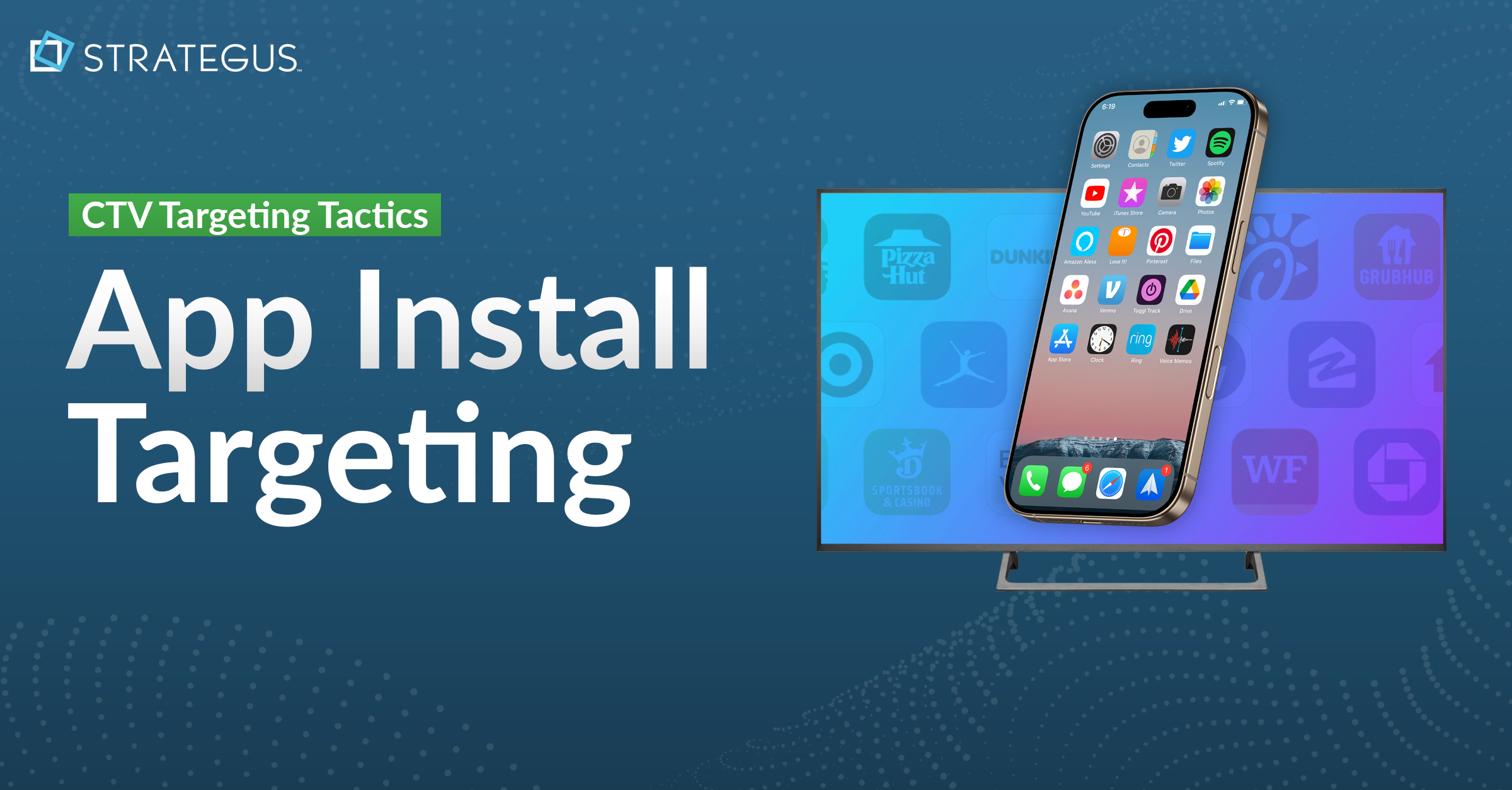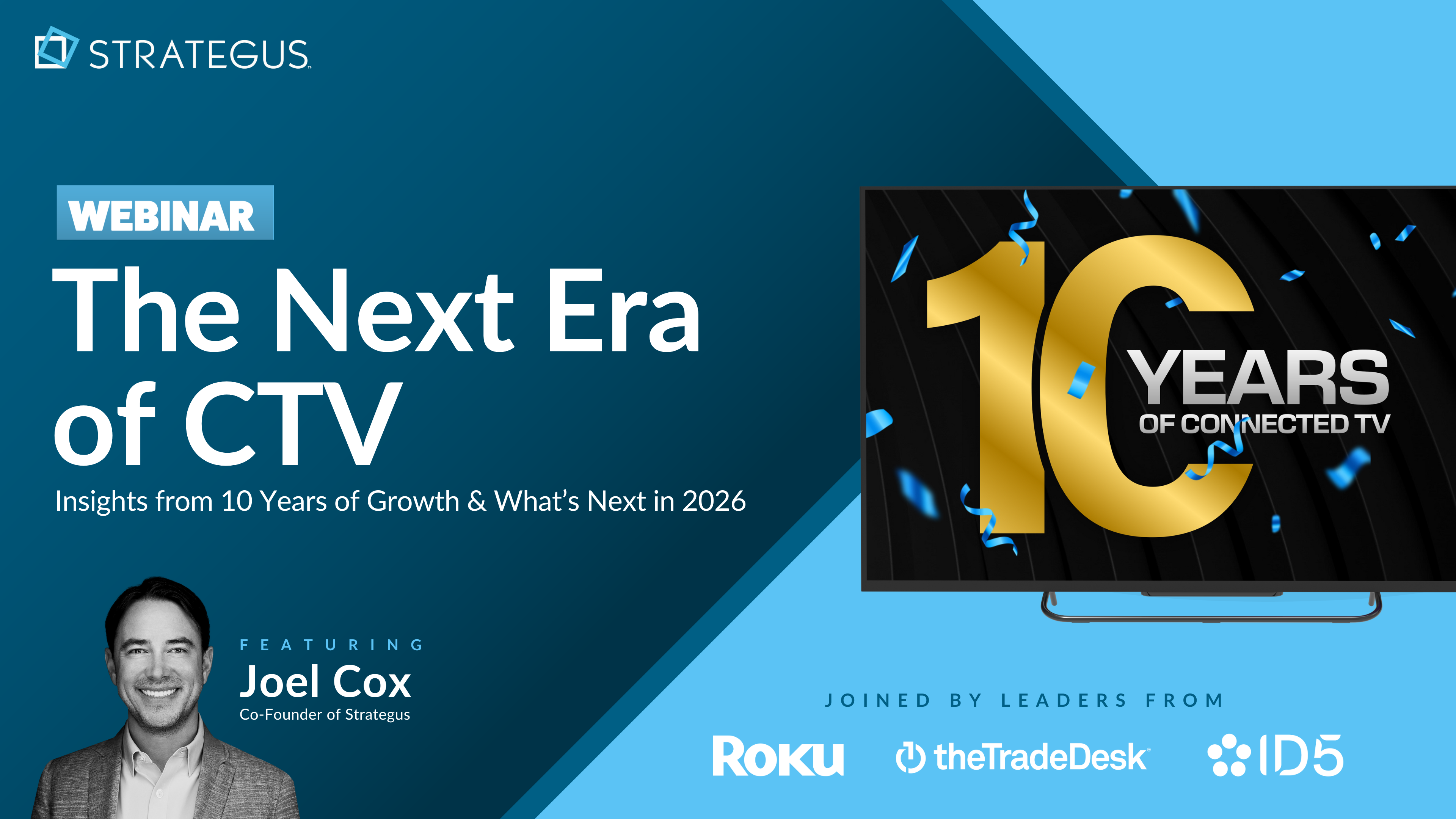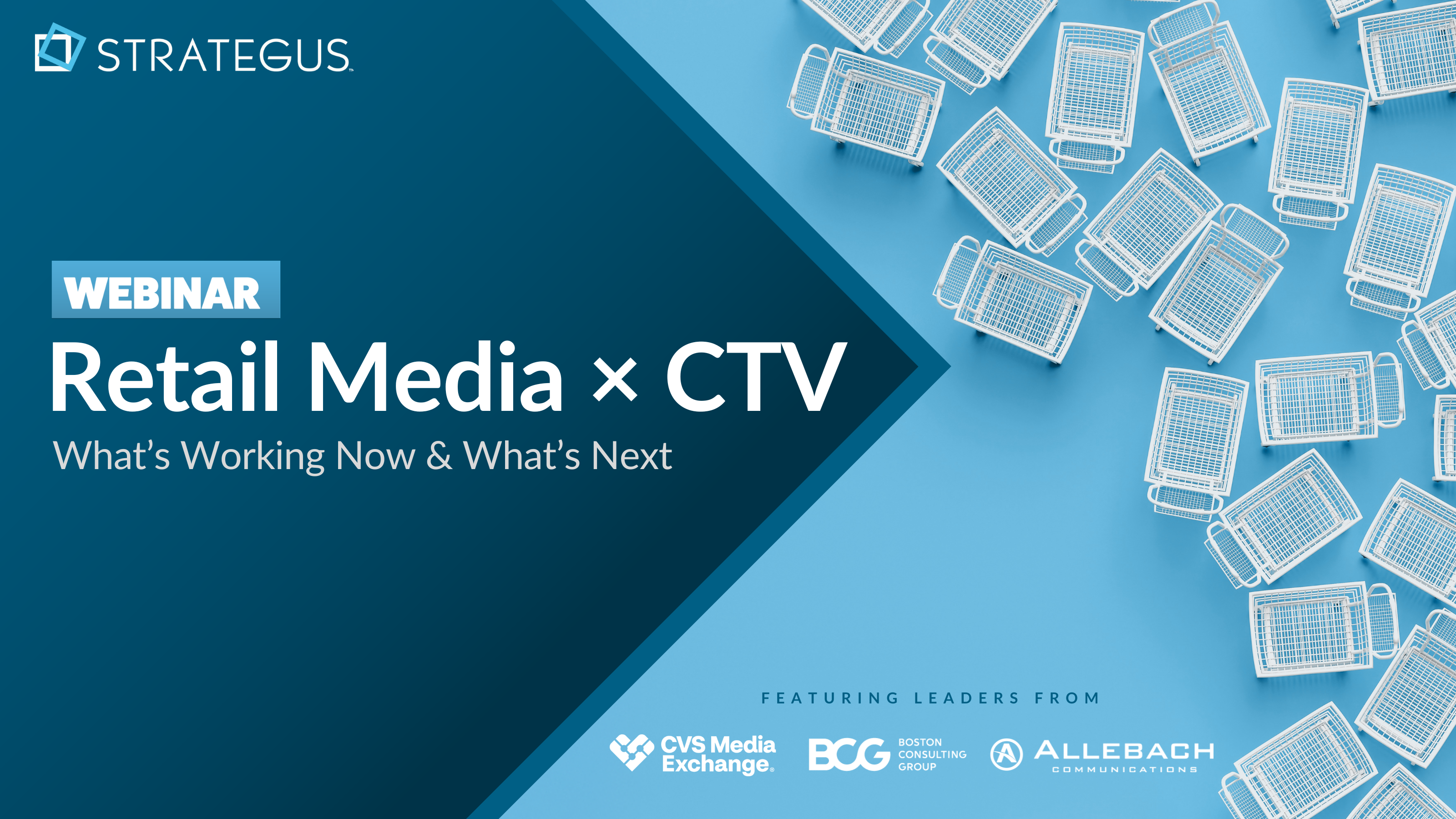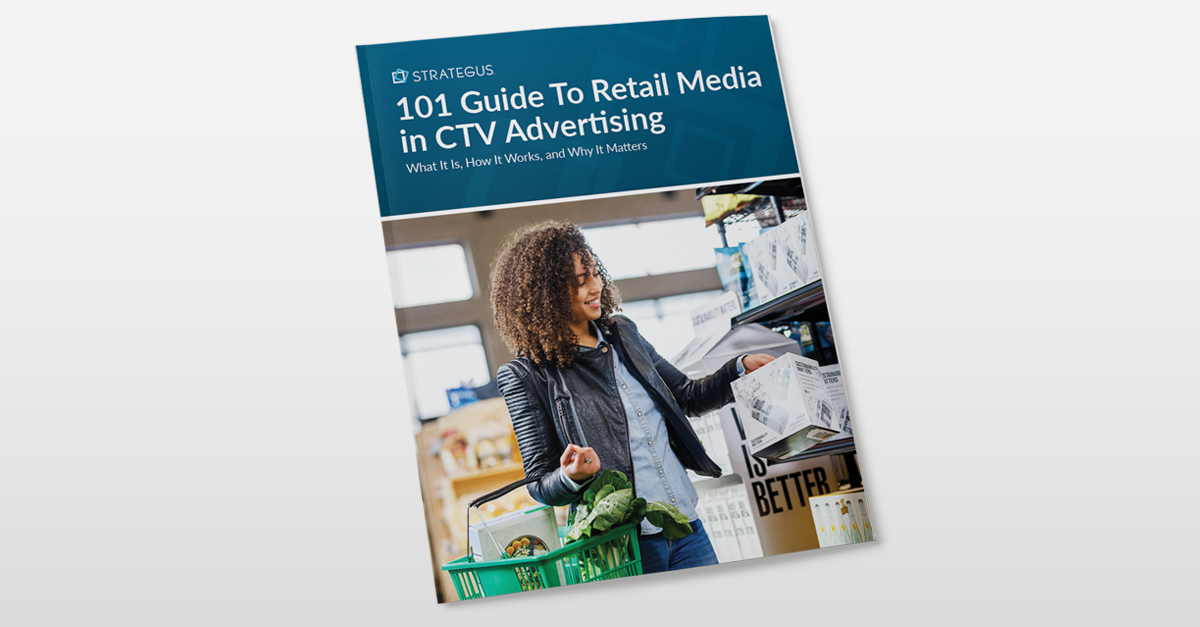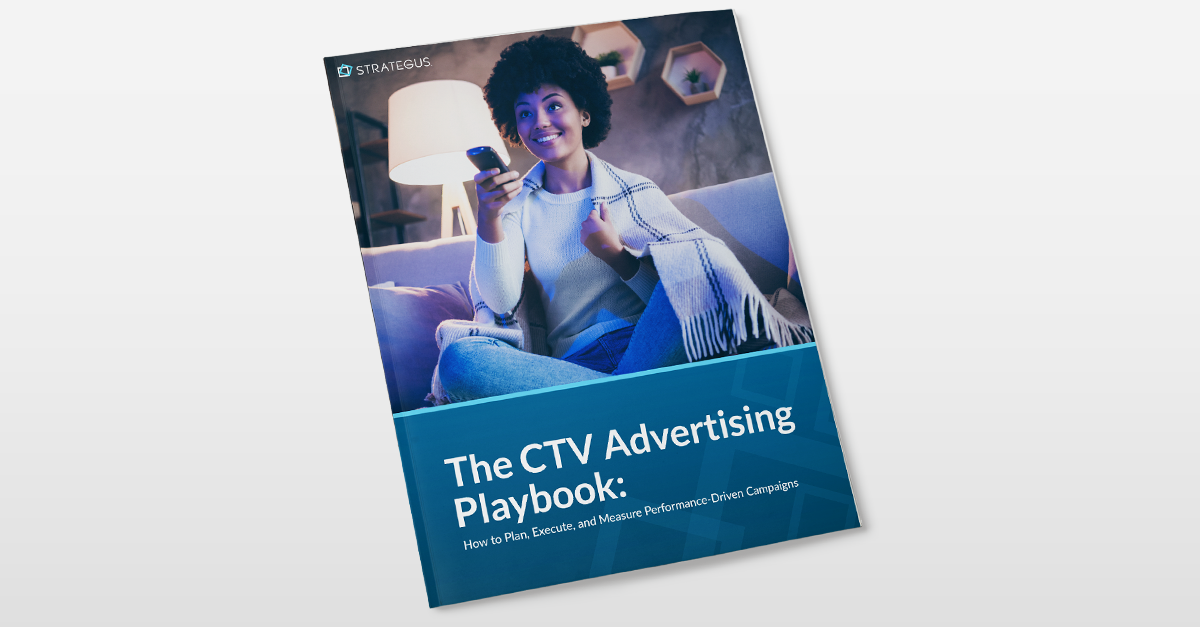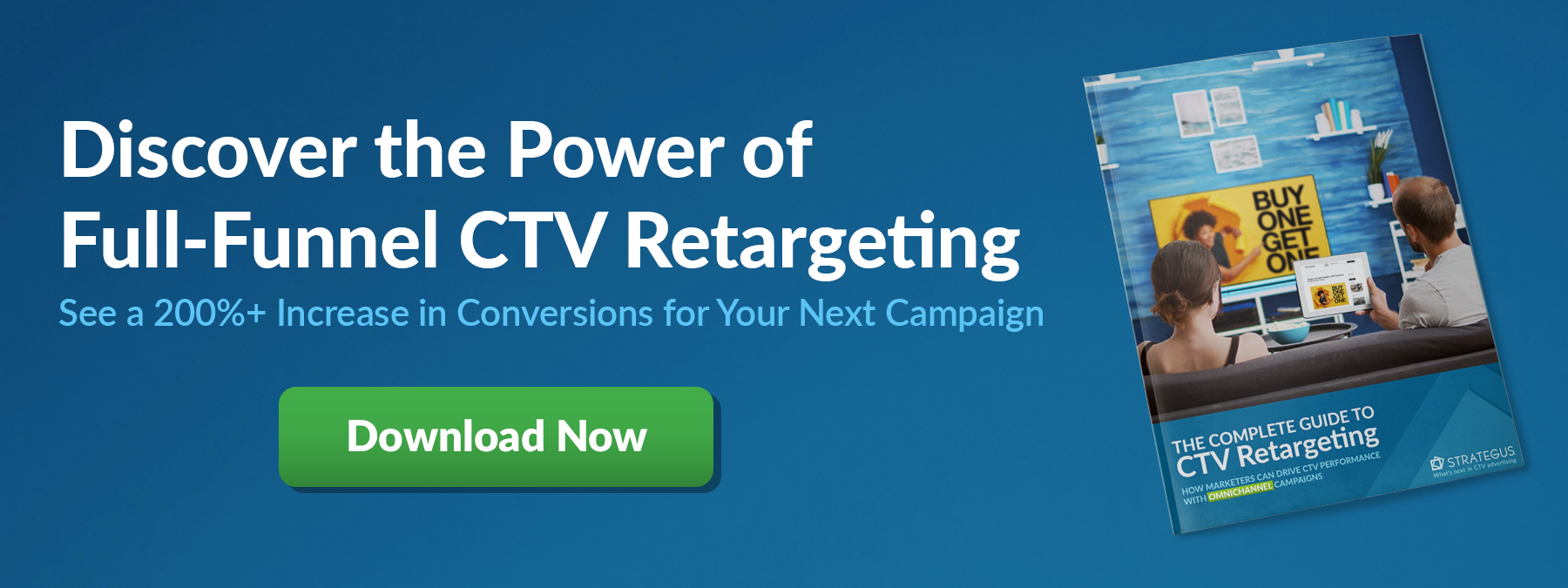- Home
- Strategus Blog
- Roku Ads Guide 2025: How to Advertise on Roku
Roku Ads Guide 2025: How to Advertise on Roku
13 minutes read
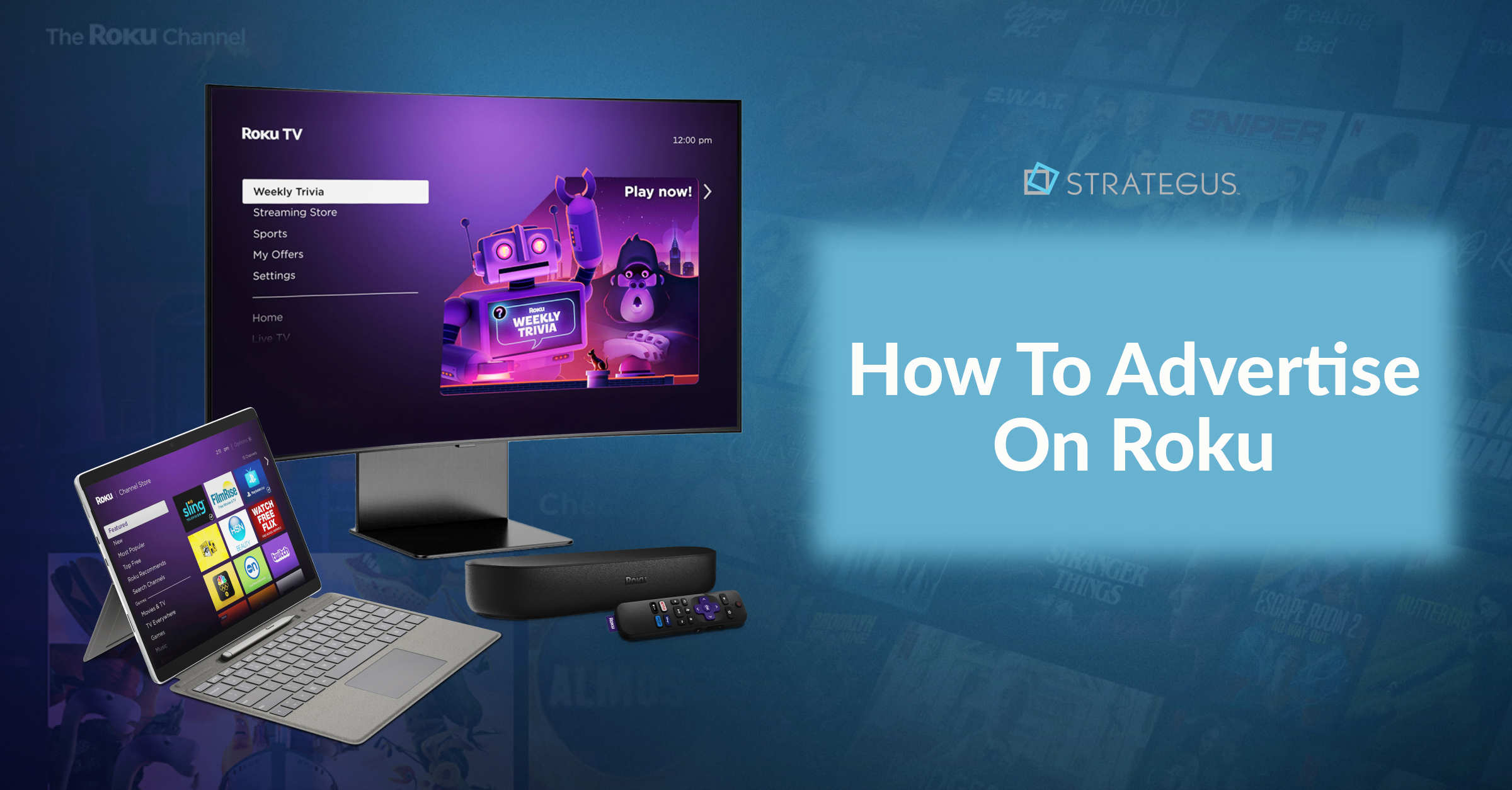
Streaming has changed everything, including how brands connect with their audiences. While Netflix and Disney+ grab headlines, Roku has quietly built an advertising powerhouse that marketers can't afford to ignore. With over 90 million active accounts and viewers spending billions of hours streaming content, Roku offers access to audiences who have largely vanished from traditional TV.
But here's the thing: advertising on Roku is nothing like running ads on traditional TV. The connected TV (CTV) platform combines the targeting precision of digital marketing with the immersive impact of television, creating unique opportunities (and challenges) for brands looking to make an impression in the living room.
This guide explains exactly what you need to know to launch effective Roku advertising campaigns. We'll cover everything from understanding Roku's advertising ecosystem to setting up your first campaign, optimizing for performance, and measuring what matters.
Key Takeaways
- Roku advertising offers premium ad placements and precise targeting, reaching 90M+ active accounts in a highly engaged streaming environment.
- Unlike traditional TV, Roku enables digital-like targeting based on demographics, viewing behavior, and first-party data integration.
- Challenges include strict content policies, competitive ad inventory, audience fragmentation, and limited real-time optimization.
- Advertisers can choose from multiple formats like full-screen video ads, pause ads, and binge ads for maximum engagement.
- Optimizing Roku ads requires strategic audience selection, budget allocation, A/B testing, and cross-device retargeting.
- Running campaigns directly through Roku Ads Manager limits you to the Roku ecosystem, which only makes up a small piece of the streaming pie.
- Strategus helps advertisers get more out of Roku advertising by providing access to 200+ publishers and handling everything from campaign setup, targeting, bidding, and performance tracking.
Why Advertise on Roku?
So you're looking to advertise on Roku, but why should you invest your marketing dollars there first? Here are some compelling reasons that make Roku a powerhouse platform for advertisers in 2025.
Reaching Viewers Where They Actually Watch
Roku is a leading streaming TV service in the U.S. and Mexico, making it a natural fit for most advertisers. The average Roku user spends over 4 hours streaming daily, which is some serious engagement. As viewers continue cutting the cord, advertising on Roku is a great way to keep your brand visible to audiences that are tuning in elsewhere.
Targeting That Makes Sense
Unlike old-school TV advertising that casts a wide net, Roku lets you zero-in on exactly who you want to reach. Their platform uses viewing habits, household data, and smart technology to deliver ads to the most receptive audiences. This precision approach means your ad dollars work harder and connect with the right people.
Quality Content Environment
Your brand deserves to shine in the right context. Roku provides premium ad placements across The Roku Channel and thousands of popular apps, ensuring your ads appear alongside professional content. This brand-safe environment protects your reputation while maximizing impact.
Ad Formats That Fit Your Goals
Roku's flexible advertising options let you create experiences that resonate:
- Full-screen video ads that capture complete attention
- Clever pause ads that appear when viewers take a break
- Custom branded experiences that make your message stand out
Choose the format that aligns with what you're trying to accomplish, whether that's building awareness or driving conversions.
Limitations of Advertising on Roku
While Roku dominates the CTV advertising landscape, running successful campaigns isn't exactly plug-and-play simple. There are certain limitations with Roku that advertisers need to know about.
Strict Content and Advertising Policies
Roku enforces rigid advertising guidelines to maintain a brand-safe environment. Advertisers must comply with content restrictions, which prohibit ads related to gambling, illegal substances, weapons, and tobacco products.
Additionally, advertisements that compete directly with Roku’s own products aren’t allowed either. This usually isn’t an issue but, with Roku, it’s a limitation because of how broad the company’s list of services are. You can’t advertise streaming devices, smart TVs, or gaming consoles.
Strategus tip: We work with agencies and brands to share pre-approval requirements and navigate any gotchas to make it a more pain-free process than taking a DIY approach.
Competition for Premium Inventory
With 89.8 million active accounts and 100 billion hours streamed in 2023, Roku is a high-demand platform for advertisers. While this massive audience presents an opportunity, it also creates a highly competitive ad market. Premium inventory, such as prime-time slots, popular channels, and exclusive Roku Originals, can be difficult to secure without high bids or long-term commitments.
Brands that don’t have optimized bidding strategies or large budgets may struggle to get the best placements, often leading to less visibility and lower engagement rates than expected.
Strategus tip: Because we’ve built relationships with providers across the CTV ecosystem and deliver thousands of campaigns every year, we’re able to secure more favorable deals for the brands and agencies we partner with.
Fragmented Audience and Device Ecosystem
One of Roku’s biggest strengths, its wide variety of channels and apps, can also be a challenge for advertisers. Unlike platforms like YouTube or Hulu, where ad placements are centralized, Roku’s ecosystem is fragmented across thousands of channels, including The Roku Channel, live TV apps, AVOD (ad-supported video on demand) services, and third-party apps.
This fragmentation makes it harder to ensure consistent brand exposure across multiple placements. Advertisers must strategically select channels, bid for placements, and manage targeting separately, which adds complexity to campaign execution.
Strategus tip: We unify all CTV campaign activity into a single 24/7 reporting dashboard, giving advertisers full visibility across the fragmented landscape. Our team also takes a hands-on approach so that the onus isn’t on your team to bid, manage, and monitor campaigns.
Ad Avoidance and Viewer Fatigue
While Roku offers non-skippable ad formats, it doesn’t mean viewers are fully engaged. Many Roku users adopt ad-avoidance behaviors, such as:
- Switching to another channel during ad breaks
- Using multiple screens (phones, tablets) during ads
- Choosing paid ad-free subscriptions when available
Additionally, high ad frequency from multiple advertisers can lead to viewer fatigue, making users less receptive to ads over time. Without proper frequency management, brands may see diminishing returns as the same audience becomes desensitized to repeated ads.
Strategus tip: As your CTV-first advertising partner, we’ll control frequency across publishers and optimize campaigns based on what the data reveals.
Limited Real-Time Optimization and Reporting
Unlike digital ad platforms like Google Ads or Meta, where advertisers can adjust campaigns instantly, Roku’s ad system is less flexible in real-time. Performance metrics like impressions, engagement rates, and conversions are available, but optimization requires longer adjustment periods.
For businesses running time-sensitive campaigns, such as seasonal promotions or event-based ads, Roku’s slower optimization cycle can be a drawback. Advertisers may also find attribution tracking more challenging, especially when trying to measure cross-device conversions.
Strategus tip: Our 24/7 reporting dashboard offers real-time insight into campaign performance — across Roku, Tubi, and more. Because we integrate data, inventory, and attribution solutions from a large network of partners, you can monitor all the KPIs from a single location.
Want to Advertise on Roku Without the Limitations?
Roku's advertising platform packs serious power, but its complex ecosystem, fierce inventory competition, and limited on-the-fly optimization options can leave many marketers scratching their heads. Rather than fixing these issues yourself, Strategus offers a fully managed solution that handles the complexities while you focus on results.
We serve as your hands-on partner, taking the stress of advertising on Roku off your plate. We secure premium ad spots through smart bidding tactics and industry relationships that ensure your brand stands out in a crowded streaming landscape. Our data-driven targeting approach means no more wasted budget on viewers who don't matter to your business — we find your audience across the entire Roku universe.
While self-managed campaigns often mean juggling dozens of placements (and developing a few new gray hairs), Strategus centralizes everything for consistent brand exposure throughout Roku's fragmented ecosystem. We also keep viewers from getting annoyed by your ads through strategic frequency capping and clever cross-device retargeting.
Perhaps the biggest Roku headache — limited real-time optimization — becomes our problem, not yours. We continuously monitor, analyze, and adjust your campaigns for peak performance while providing attribution insights that actually make sense for decision-making.
Why navigate the Roku learning curve when we can maximize your advertising budget from day one? Speak to a Strategus expert today and learn more about how we can help.
How to Advertise on Roku
Jumping into Roku advertising requires navigating a few critical steps to get your campaigns up and running effectively. Here's your straightforward guide to conquering this powerful platform:
1. Set Up Your Roku Ads Manager Account
To begin advertising on Roku, you need to register and set up an account on Roku Ads Manager. This is the self-serve platform that allows businesses to create, launch, and monitor their advertising campaigns.
Once registered, advertisers gain access to a campaign dashboard where they can manage ad placements, define targeting preferences, and track performance. The platform provides automated tools and real-time reporting, making it easy for businesses to analyze their results.
For brands running large-scale campaigns or requiring custom ad solutions, Roku also offers managed services, which provide additional campaign support. While self-serve options give advertisers flexibility, managed services help optimize ad spend, secure premium placements, and ensure campaign efficiency. That said, these managed services are limited to the Roku ecosystem, so it’s not a complete solution for cross-publisher CTV advertising.
2. Define Your Advertising Goals
A clear and measurable goal is essential for a successful Roku campaign. Your objective will determine ad placement, targeting strategy, and performance tracking metrics.
Advertisers on Roku typically focus on one or more of the following objectives:
- Brand Awareness: If you’re launching a new product or service, running a broad-reach campaign can increase visibility among potential customers.
- Website Traffic: Roku’s ad formats allow for clickable overlays, directing users to landing pages, e-commerce stores, or promotional content.
- Lead Generation & Conversions: For brands looking to capture customer data or drive direct purchases, Roku enables call-to-action-driven ads. Brands and agencies can also design sophisticated cross-device retargeting campaigns by teaming up with our CTV experts at Strategus.
3. Select Your Target Audience and Budget
One of Roku’s biggest strengths is its targeting capabilities, allowing brands to move beyond broad demographics and reach highly specific consumer segments.
Audience targeting options include:
- Demographic Targeting: Advertisers can refine their audience based on age, gender, household income, and family size.
- Viewing Behavior: Roku tracks content preferences, watch history, and streaming habits to serve ads that align with user interests.
- Geographic Targeting: Brands can set ads to display nationwide, regionally, or locally, depending on their campaign strategy.
- First-Party and Third-Party Data Integration: Roku’s subscriber data and partnerships with third-party data providers allow for even more precise audience segmentation.
Budgeting Considerations
Budget allocation on Roku depends on factors such as campaign duration, ad format, and bidding strategy. Advertisers can:
- Set daily budgets or lifetime spending limits.
- Choose between automated bidding (optimized for performance) or manual bidding (fixed CPM rates).
- Monitor campaign performance and adjust budget allocation based on high-performing audience segments.
With a well-planned budget and targeted approach, advertisers can reduce wasted ad spend and maximize campaign impact.
4. Choose the Right Ad Format
Roku offers various ad formats for your display creative designed to engage viewers in different ways. Selecting the right ad type is essential for aligning with campaign goals and optimizing audience interaction.
Standard Video Ads
These are non-skippable, full-screen video ads that appear before, during, or after streaming content. They work well for brand awareness campaigns and direct-response advertising.
Pause Ads
When users pause content, a static ad appears on the screen, providing a non-intrusive branding moment. These are ideal for brands wanting to capture attention without interrupting the viewing experience.
Binge Ads
Viewers watching multiple episodes in a row may see a longer ad in exchange for an ad-free episode, creating a mutually beneficial experience that enhances engagement.
Interactive & Clickable Ads
Certain ad formats allow users to use their Roku remote to interact with an ad—whether it’s requesting more information, making a purchase, or signing up for a promotion.
5. Launch Your Campaign and Monitor Performance
Once your campaign is live, monitoring real-time performance data is critical to ensuring it meets expectations. Roku Ads Manager provides detailed analytics that allow advertisers to track:
- Impressions: The total number of times your ad was displayed.
- Engagement Rates: The percentage of viewers who interacted with or clicked on an ad.
- Conversion Metrics: How many users visited a website or completed an action after seeing the ad?
Optimizing Your Campaign
- A/B Test Different Ad Creatives: Try variations of your ad to determine which performs best in terms of engagement and conversions.
- Adjust Bidding and Budget Allocation: Monitor which placements and audience segments are performing best, and reallocate the budget accordingly.
- Refine Targeting Over Time: If certain audience segments are not engaging, adjust the campaign to focus on higher-intent viewers.
6. Scale and Optimize for Long-Term Success
Launching a campaign is just the first step. To ensure sustained success on Roku, ongoing adjustments and improvements are necessary.
Avoiding Ad Fatigue
Repeated exposure to the same ad can reduce viewer engagement. By implementing frequency capping, brands can prevent overexposure while maintaining strong brand recall.
Expanding into New Ad Formats
Once a campaign gains traction, brands can test additional ad formats such as binge ads, interactive placements, or sponsorship opportunities to increase engagement and brand visibility.
Leveraging Cross-Device Retargeting
Consumers often switch between devices while streaming. Retargeting users who saw a Roku ad with follow-up ads on mobile, desktop, or social media increases the likelihood of conversions.
Monitoring Seasonal Trends
Ad rates fluctuate during peak periods like holidays and major events. Adjusting ad spend based on seasonal demand can improve cost efficiency and ROI.
How Strategus Can Help
With the right partners, tools, and expertise, Roku advertising can be a game-changer. However, taking a strategic approach is an absolute must, and it quickly becomes a full-time job in its own right.
When agencies and brands partner with us to plan, manage, and optimize their CTV campaigns, they don’t have to learn a new platform or get caught up in the minutia. We provide direct access to the vast (and fragmented) world of CTV advertising, as well as a team that handles every piece of the puzzle.
Here’s some food for thought from our Co-Founder Joel Cox, before our closing comments.
Closing Thoughts — Is Advertising on Roku Worth It?
Advertising on Roku is one of the most effective ways to reach highly engaged streaming audiences as traditional TV viewership declines. With 89.8 million active accounts and over 100 billion hours of content streamed in 2023, Roku provides unmatched reach, premium ad placements, and advanced targeting capabilities. Businesses can leverage first-party data, optimize ad spend in real time, and track campaign performance with detailed analytics, making it a powerful platform for digital advertising.
However, while Roku offers incredible opportunities, managing campaigns effectively is easier said than done. Advertisers who try to navigate Roku’s self-serve ad system on their own often run into challenges — competing for premium inventory, selecting the right targeting strategies, and optimizing bids without wasting budget. Without the expertise to fine-tune campaigns in real-time, many businesses end up overspending on inefficient placements or failing to achieve meaningful results.
That’s where we come in. As a hands-on partner, Strategus handles everything from campaign setup and audience segmentation to bid management and performance tracking. Our team ensures that your ad spend works harder, your targeting is precise, and your campaigns drive measurable success.
If you want to get the most out of your Roku advertising investment without the guesswork, speak to a Strategus expert and learn more about how we can help.
Roku Advertising: Frequently Asked Questions
What Is the Minimum Budget Required for Roku Advertising?
The minimum budget for Roku advertising depends on the campaign type and objectives, but Roku’s self-serve platform allows advertisers to start with flexible spending levels. This makes it accessible for both small businesses and larger enterprises, giving brands the ability to scale their budgets based on performance.
How Does Roku’s Audience Targeting Work?
Roku’s audience targeting leverages a combination of demographic, interest-based, and behavioral data to reach the most relevant viewers. Advertisers can refine their targeting based on age, gender, household income, content preferences, and streaming behaviors. This precision ensures that ads are delivered to audiences most likely to engage, reducing wasted ad spend.
What Ad Formats Are Available on Roku?
Roku offers a variety of ad formats designed to fit different campaign objectives:
- Video Ads: Non-skippable commercials that play before, during, or after content.
- Banner Ads: Static or animated ads displayed on the Roku home screen or within streaming apps.
- Interactive Ads: Ads that allow viewers to engage using their remote, such as clicking for more information or requesting a special offer.
How Do You Measure the Success of a Roku Ad Campaign?
Success is tracked using key performance metrics such as impressions, clicks, engagement rates, and conversions. Roku’s built-in reporting tools provide detailed analytics, helping advertisers monitor audience reach, ad performance, and return on investment (ROI). By analyzing these insights, brands can optimize their campaigns in real-time for better results.
Strategus is a managed services connected TV(CTV) advertising agency with over 60,000+ campaigns delivered. Find out how our experts can extend your team and drive the result that matter most.
Talk to an Expert
Seeking a Custom CTV Strategy That Delivers?
What to read next
App Event Tracking: Tie Mobile App Activity to CTV Campaigns
Let’s say you’re running a CTV campaign for a personal finance app.
5 minutes read

Stop Guessing Who Your Audience Is — Let Their Apps Tell You
Connected TV (CTV) targeting often falls in one of two camps.
8 minutes read
See Who Bought After Your Ad + How Much They Spent
You can’t improve what you can’t measure. And for years, that’s been a major problem with TV advertising.
4 minutes read

First-Party Attribution: Match Ads to Sales With CRM Data
The value of first-party data continues to grow.
7 minutes read



